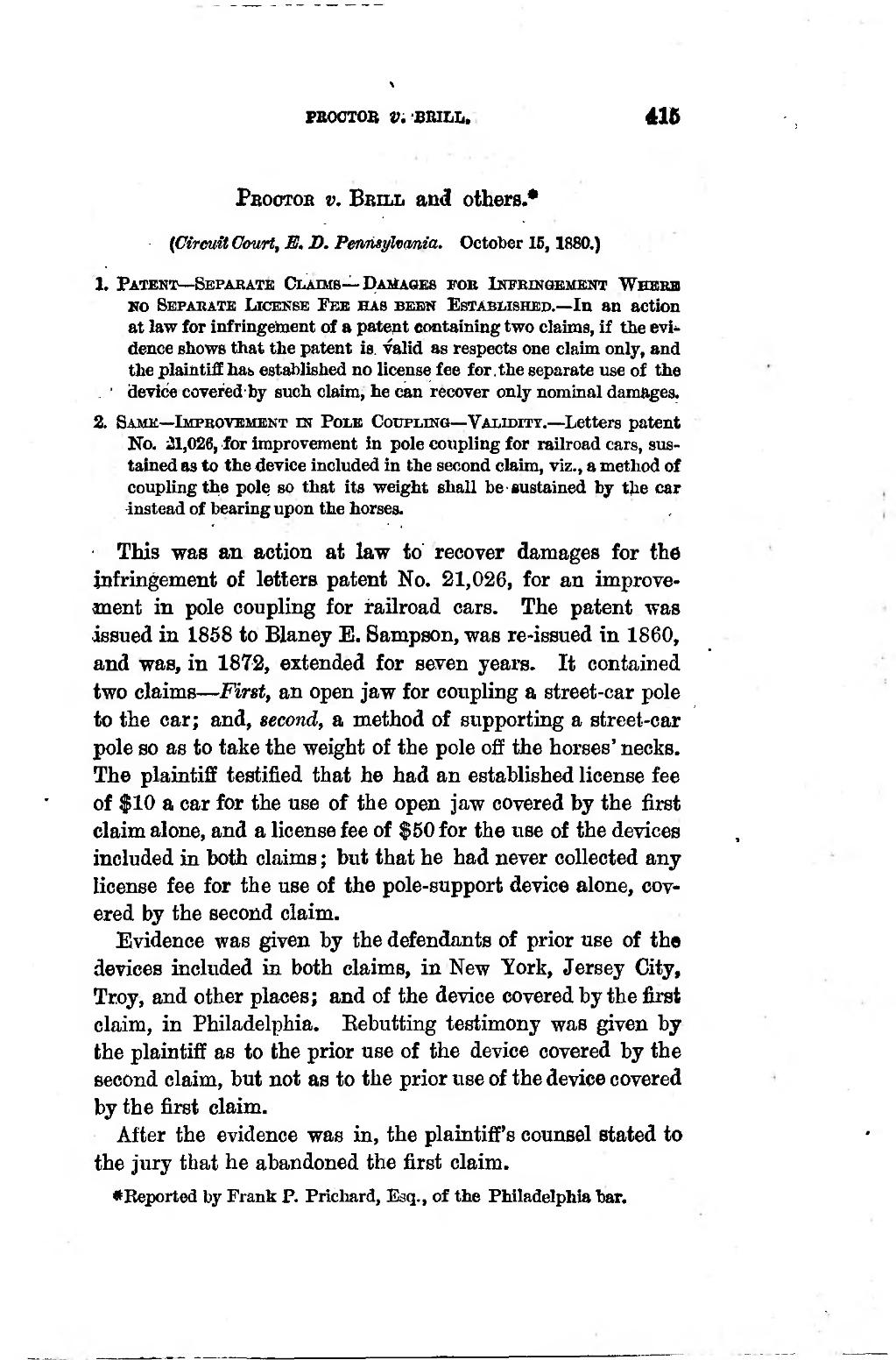FSOOTOB «;. BBILIi. 416 �Pbootob V. Bbill and othera.* �{Circuit Oowrt, E. D. Penrisylvania. October 15, 1880.) �1. Patent — Sbpabatb Claims— DaMases foe Infeingement Whkeb �NO Sbpaeate License Fbb HA8 BEBN EsTABUSHED.— lu an action at law for infringement of a patent eontaining two claims, if the evi- dence shows that the patent is valid as respects one claim only, and the plaintif has, estaWished no license fee for. the separate use of the ' device coveredhy such claim; he can recover only nominal damages. �2. Samk— Impeovement rs Polb CouPLiNa — Validitt. — Letters patent �No. ;31,026, for improvement in pôle coUpling for railroad cars, sus- tained as to the device included in the second claim, viz., a method of coupling the pôle so that its weight shall be «ustained by the car instead of bearing upon the horses. �This was an action at law to recover damages for the infringement of letters patent No. 21,026, for an improve- ment in pôle coupling for railroad cars. The patent was issued in 1858 to Blaney E. Sampson, was re-issued in 1860, and was, in 18T2, extended for seven years. It eontained two claims — First, an open jaw for coupling a street-car pôle to the car; and, second, a method of supporting a street-car pôle 80 as to take the weight of the pôle ofif the horses' necks. The plaintiflf testified that he had an established license fee of $10 a car for the use of the open jaw covered by the first claim alone, and a license fee of $50 for the use of the devices included in both claims ; but that he had never coUected any license fee for the use of the pole-support device alone, cov- ered by the second claim. �Evidence was given by the defendants of prier use of the devices included in both claims, in New York, Jersey City, Troy, and other places; and of the device covered by the first claim, in Philadelphia. Eebutting testimony was given by the plaintiff as to the prior use of the device covered by the second claim, but not as to the prior use of the device covered by the first claim. �After the evidence was in, the plaintiff's counsel stated to the jury that he abandoned the first claim. �*Reported by Frank P. Prichard, Esq., of the Philadelphia bar. ����
Page:Federal Reporter, 1st Series, Volume 4.djvu/429
This page needs to be proofread.
